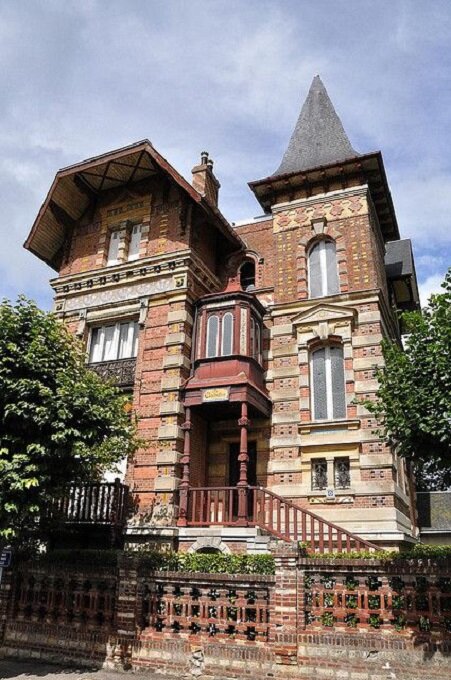
This magnificent mansion is an excellent example of late 19th-century architecture with elements of eclecticism and Neo-Gothic style. The facade features rich brickwork with decorative polychrome elements creating an effect of horizontal articulation. The asymmetrical composition with an expressive tower topped by a pointed spire roof—a characteristic element of Neo-Gothic style—draws particular attention.
The facade demonstrates the architect's mastery in working with details: decorative cornices, window frames with architraves, a projecting bay window with wooden elements, and an elegant porch with columns create a rich play of light and shadow. The polychromatic brickwork with horizontal ornamental bands emphasizes the building's structure and gives it a special rhythm.
The entrance group with a covered veranda and wooden staircase becomes a key point of the composition, demonstrating attention to detail and functionality. The original railing of the fence resonates with the overall style of the building, forming a coherent architectural ensemble.
When creating a modern facade design, several valuable techniques can be drawn from this historical example: the use of contrasting materials and textures, asymmetrical composition to create dynamics, vertical accents to visually increase the height of the building, and a thoughtful color scheme with decorative inserts to emphasize architectural rhythm.